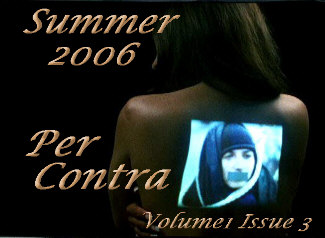
Reinventing a New Classic: The New Janson by Charles Morscheck
Students tend to think that art history is primarily a verbal discipline, all about absorbing information. They try to memorize all the names, dates and places; however, real learning in art history consists of mastering particular skills: the ability to recognize an artwork previously seen (or even one not previously seen); to recall artworks in one's visual imagination even when no image is present; to be able to organize in the mind many images of art objects and to make sense of them--to impose on them categories such as period-style, date, author and place of production.
Memorization cannot produce these skills; only thinking and practicing, analyzing and synthesizing will do so. Illustrations, therefore, are about ten times as important as narrative text. The essential task is that the textbook present excellent illustrations of the most significant art objects and put them economically in a sequence and a context that makes sense. The textbook should be a well-designed tool rather than a fat, wordy repertory.
Janson would be better if it contained about half as many words and weighed a pound or two less. The vaunted “authorship of six distinguished specialists” doesn't matter much. No one is a specialist on “Ancient” or “Renaissance.” Our specializations are much narrower (in my case Milanese Renaissance sculpture). If I were to write about the Renaissance as a whole, the result would be more like journalism than “an exciting currency in art historical thinking.”
Anything an art historian can write pales into dullness compared to the artwork discussed. If the student isn't excited by the Laocoon, she isn't going to be excited by purple prose about it. Half of the words of Janson could be eliminated without reducing its interest or usefulness. The Contents in the 7th edition run ten pages; in the previous edition it was only 6 2/3 pages. Out with that part of the Preface which is a shameless advertisement for this edition. Out with page xix which advertises supplementary learning products. Out with the emphasis on Freelove Olney Scott. Out with the “new boxed features” on “Materials and Techniques” and “The Art Historian's Lens” and “Informing Art.” Out with all “boxes” whatsoever. Out with the now fragmented timelines. (A timeline is useless unless it gives the student a memorable picture of time.) Out especially with the chapter summaries. Out even with the well-selected and well-intentioned primary sources, which have the effect of reducing great authors to sound bites and taking them out of context.
The illustrations should include as many of the most important artworks as possible. Out with the 30 redundant frontispieces to the chapters - they are merely details of objects illustrated more appropriately in their chronological sequence. Out with diagrams unless they are really useful plans or sections of architecture. Out with images of objects which are not major artworks but included primarily because they increase the emphasis on women (such as fig. 3.23 or 5.77) or objects which are more archaeological than artistic (such as fig. 5.6). Out with Kleinkunst (such as figs. 9.35, 10.2, 19.16 and 22.12).
In place of such illustrations, restore the following, which were cut from the previous edition: the black-figure painting of Herakles Strangling the Nemean Lion; the Charioteer of Delphi; the Dying Niobid; the Pont du Gard; the allegorical panel of Peace from the Ara Pacis; the wall painting of Hercules and Telephus; the Virgin and Child mosaic from Hagia Sophia; the Balustrade Relief from Cividale; the Amiens choir vault; the Palazzo Vecchio; Simone Martini's Road to Calvary; Donatello's Zuccone and his Mary Magdalene; Mantegna's St. James Led to His Execution and the preparatory drawing for it; Michelangelo's Dying Slave; Titian's Christ Crowned with Thorns; Durer's Knight, Death and the Devil; Frans Hals's Malle Babbe; Rembrandt's Christ Preaching; and Fragonard's Bathers. One could think of many more first-rate masterpieces which were not in the previous edition but should have been.
In spite of these criticisms, I like the new Janson better than its competition and better than the previous edition. It remains largely faithful to Janson's original selection of objects. The quality of the color illustrations remains excellent. The reinstatement of the chapter on Islamic art was a good idea, and several errors in the text have been corrected. “Janson's central focus on the work of art” has been maintained. In fact, if the foregoing recommendations were implemented, the book would be largely like a more colorful, better-illustrated version of the 1962 first edition.